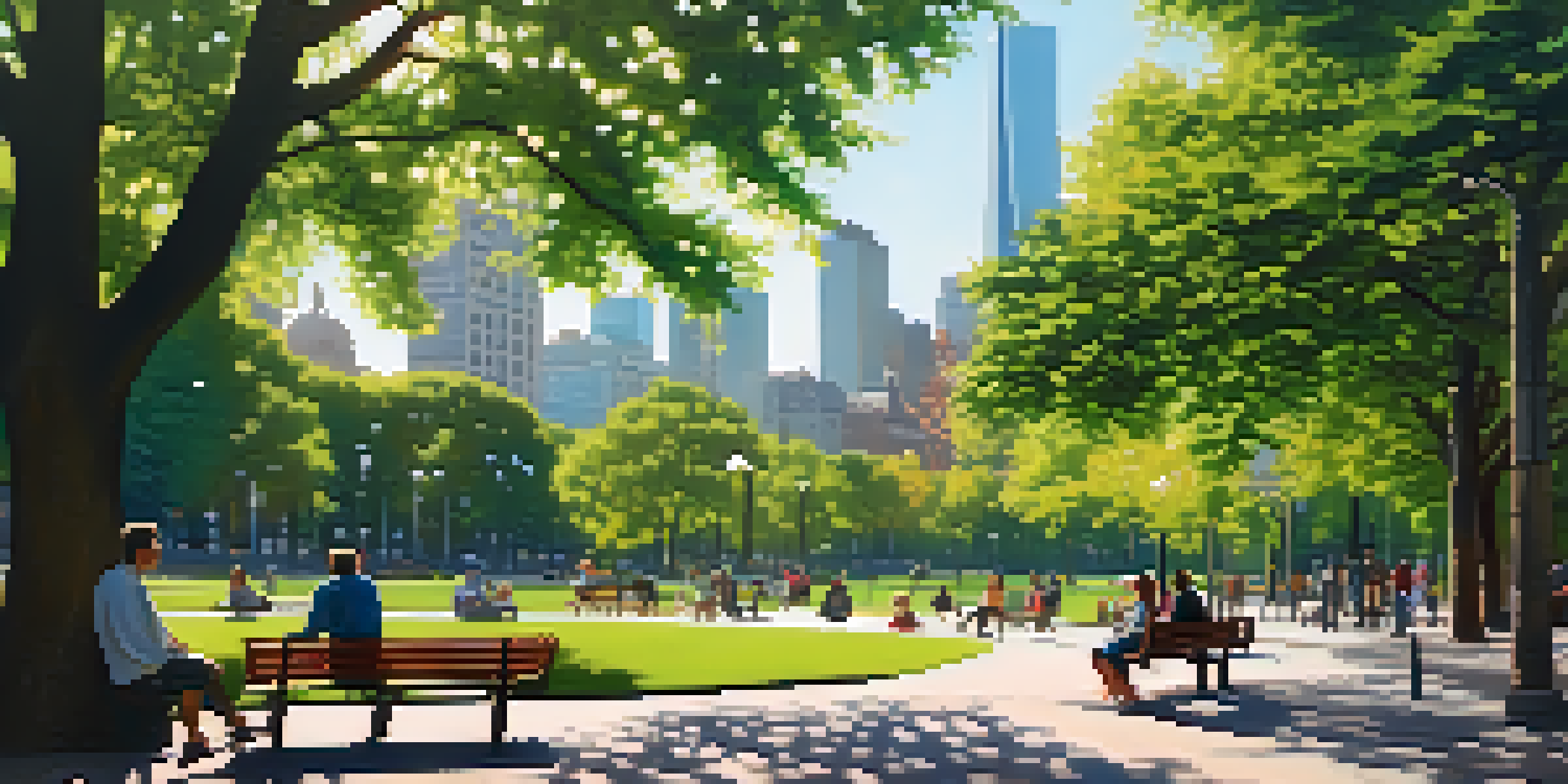The Connection Between Mental Health and Urban Greenery

Understanding Mental Health in Urban Environments
Mental health refers to our emotional, psychological, and social well-being. In urban settings, where noise and chaos can be overwhelming, maintaining mental health becomes a crucial challenge. Many residents of bustling cities report feelings of anxiety, depression, and isolation, making it essential to explore factors that can mitigate these issues.
The Role of Nature in Boosting Mental Well-Being
Research consistently shows that spending time in nature can significantly improve mental health. Nature acts as a natural stress reliever, helping to lower cortisol levels and promote relaxation. For instance, just a short walk in a park can elevate your mood and provide a much-needed break from the urban grind.
Nature Enhances Urban Mental Health
Spending time in nature significantly improves mental well-being, helping to alleviate anxiety and depression.
Urban Greenery: Parks, Gardens, and Green Spaces
Urban greenery includes parks, community gardens, and street trees, all contributing to mental health. These spaces not only provide a respite from the concrete jungle, but they also encourage social interaction and community building. When people gather in these green spaces, they form connections that can combat feelings of loneliness and isolation.
Scientific Evidence Linking Nature and Mental Health
Numerous studies have documented the positive effects of green spaces on mental health. For example, a study published in the journal 'Environmental Science & Technology' found that individuals living near parks reported lower levels of depression and anxiety. This evidence reinforces the idea that access to greenery is a vital component of urban living.
Access to Green Spaces is Vital
Urban greenery not only provides respite from city life but also fosters social connections that combat loneliness.
Creating More Green Spaces in Cities
Cities around the world are increasingly recognizing the importance of green spaces for mental health. Urban planners are incorporating more parks, trees, and gardens into their designs to enhance the quality of life for residents. Initiatives such as green roofs and vertical gardens not only beautify the city but also provide much-needed relief for urban dwellers.
Personal Experiences: Nature's Impact on Mental Health
Many people can attest to the calming effects of spending time in nature. For instance, a resident of a busy city may find solace in their local park, where they can unwind and recharge. These personal anecdotes illustrate how urban greenery serves as a refuge amidst the hustle and bustle, promoting better mental health.
Barriers Limit Green Space Access
Socioeconomic factors and urban design can restrict access to green spaces, hindering their mental health benefits for many.
Barriers to Accessing Urban Greenery
Despite the benefits, not everyone has equal access to urban green spaces. Factors like socioeconomic status, location, and urban design can limit opportunities for many individuals. Addressing these barriers is essential to ensure that all community members can reap the mental health benefits of greenery.
Promoting Mental Health Through Urban Green Initiatives
Cities can implement programs that encourage interaction with nature as part of mental health strategies. Community gardening initiatives, tree planting events, and educational programs about the benefits of nature can foster a culture that values urban greenery. By prioritizing mental health through these initiatives, cities can create thriving, healthier communities.